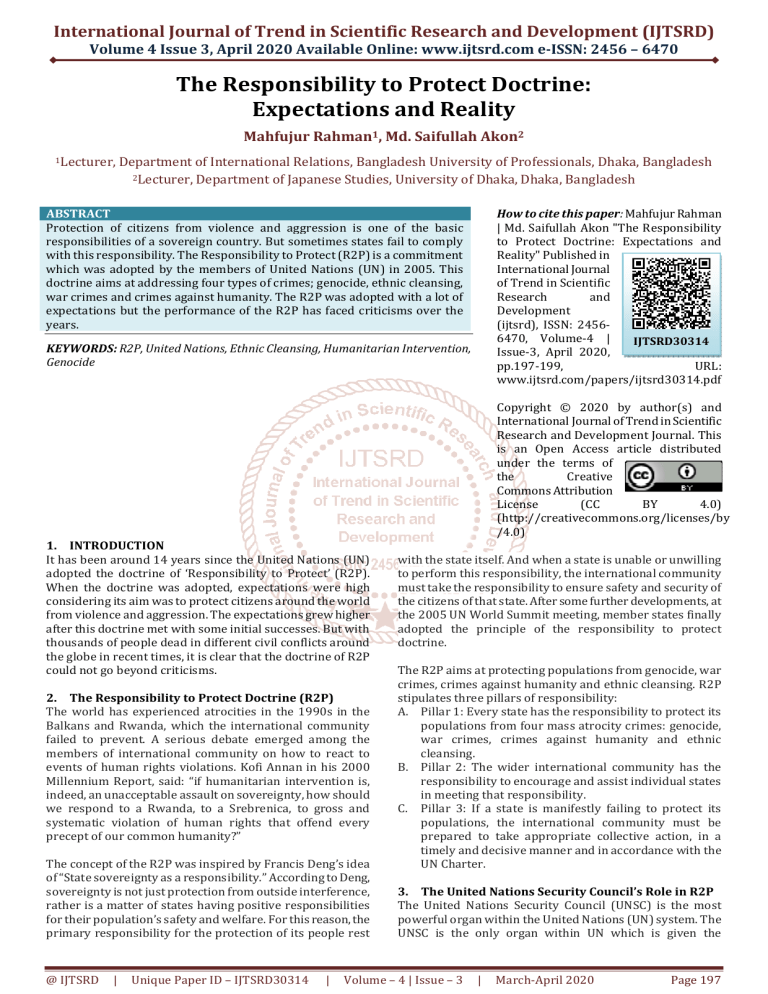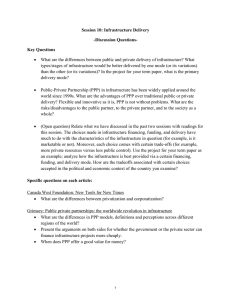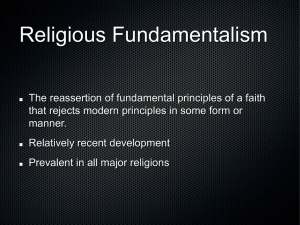
International Journal of Trend in Scientific Research and Development (IJTSRD) Volume 4 Issue 3, April 2020 Available Online: www.ijtsrd.com e-ISSN: 2456 – 6470 The Responsibility to Protect Doctrine: Expectations and Reality Mahfujur Rahman1, Md. Saifullah Akon2 1Lecturer, Department of International Relations, Bangladesh University of Professionals, Dhaka, Bangladesh 2Lecturer, Department of Japanese Studies, University of Dhaka, Dhaka, Bangladesh How to cite this paper: Mahfujur Rahman | Md. Saifullah Akon "The Responsibility to Protect Doctrine: Expectations and Reality" Published in International Journal of Trend in Scientific Research and Development (ijtsrd), ISSN: 24566470, Volume-4 | IJTSRD30314 Issue-3, April 2020, pp.197-199, URL: www.ijtsrd.com/papers/ijtsrd30314.pdf ABSTRACT Protection of citizens from violence and aggression is one of the basic responsibilities of a sovereign country. But sometimes states fail to comply with this responsibility. The Responsibility to Protect (R2P) is a commitment which was adopted by the members of United Nations (UN) in 2005. This doctrine aims at addressing four types of crimes; genocide, ethnic cleansing, war crimes and crimes against humanity. The R2P was adopted with a lot of expectations but the performance of the R2P has faced criticisms over the years. KEYWORDS: R2P, United Nations, Ethnic Cleansing, Humanitarian Intervention, Genocide Copyright © 2020 by author(s) and International Journal of Trend in Scientific Research and Development Journal. This is an Open Access article distributed under the terms of the Creative Commons Attribution License (CC BY 4.0) (http://creativecommons.org/licenses/by /4.0) 1. INTRODUCTION It has been around 14 years since the United Nations (UN) adopted the doctrine of ‘Responsibility to Protect’ (R2P). When the doctrine was adopted, expectations were high considering its aim was to protect citizens around the world from violence and aggression. The expectations grew higher after this doctrine met with some initial successes. But with thousands of people dead in different civil conflicts around the globe in recent times, it is clear that the doctrine of R2P could not go beyond criticisms. 2. The Responsibility to Protect Doctrine (R2P) The world has experienced atrocities in the 1990s in the Balkans and Rwanda, which the international community failed to prevent. A serious debate emerged among the members of international community on how to react to events of human rights violations. Kofi Annan in his 2000 Millennium Report, said: “if humanitarian intervention is, indeed, an unacceptable assault on sovereignty, how should we respond to a Rwanda, to a Srebrenica, to gross and systematic violation of human rights that offend every precept of our common humanity?” The concept of the R2P was inspired by Francis Deng’s idea of “State sovereignty as a responsibility.” According to Deng, sovereignty is not just protection from outside interference, rather is a matter of states having positive responsibilities for their population’s safety and welfare. For this reason, the primary responsibility for the protection of its people rest @ IJTSRD | Unique Paper ID – IJTSRD30314 | with the state itself. And when a state is unable or unwilling to perform this responsibility, the international community must take the responsibility to ensure safety and security of the citizens of that state. After some further developments, at the 2005 UN World Summit meeting, member states finally adopted the principle of the responsibility to protect doctrine. The R2P aims at protecting populations from genocide, war crimes, crimes against humanity and ethnic cleansing. R2P stipulates three pillars of responsibility: A. Pillar 1: Every state has the responsibility to protect its populations from four mass atrocity crimes: genocide, war crimes, crimes against humanity and ethnic cleansing. B. Pillar 2: The wider international community has the responsibility to encourage and assist individual states in meeting that responsibility. C. Pillar 3: If a state is manifestly failing to protect its populations, the international community must be prepared to take appropriate collective action, in a timely and decisive manner and in accordance with the UN Charter. 3. The United Nations Security Council’s Role in R2P The United Nations Security Council (UNSC) is the most powerful organ within the United Nations (UN) system. The UNSC is the only organ within UN which is given the Volume – 4 | Issue – 3 | March-April 2020 Page 197 International Journal of Trend in Scientific Research and Development (IJTSRD) @ www.ijtsrd.com eISSN: 2456-6470 authority of military actions by the UN Charter. The UNSC welcomed the R2P in a resolution of its own one month after the World Summit ended, portraying the importance of cooperation between the UN and regional organizations in maintaining international peace and security. In April 2006, the Security Council adopted Resolution 1674, which reaffirmed the ‘responsibility’ to protect populations from genocide, war crimes, ethnic cleansing and crimes against humanity. The Security Council is integral in implementing the international community’s timely and decisive R2P response when an R2P crisis emerges. Pillar three of the R2P asserts that the international community, through the United Nations will use appropriate diplomatic, humanitarian and other peaceful means, in accordance with Chapters of the UN Charter to protect people from atrocities. But when peaceful and diplomatic measures will fail, the Security Council will have a bigger role to play as the authorization of military interventions is only given to the UNSC. So, it is easy to understand that humanitarian military intervention is only possible if the Security Council agrees to allow it during a crisis situation. For this reason, the implementation of R2P requires the Security Council’s willingness and the unanimity among the five permanent members with veto power. 4. The Responsibility to Protect (R2P) in Practice The implementation of R2P by the United Nations Security council has had both success and failure experiences since its inception. Now it is time to evaluate the performance of R2P in three recent humanitarian crises which took place in the last ten years in three different countries. 4.1. Libya Libya was one of the countries which went through political crisis during the period of Arab Spring. In early 2011, Libyan people began their protest against the regime of Colonel Muammar Gaddafi. The demonstrations started in Benghazi first, later it spread throughout the country. Gaddafi regime responded with extreme cruelty engaging massive use of force against his own people. During the ongoing crisis, the League of Arab States held an emergency meeting and suspended Libya’s membership. The United Nations Security Council also issued a press statement welcoming the League’s position and condemning Gaddafi’s repression of the demonstrators. Moreover, Resolution 1970 was adopted On February 26, 2011by the Security Council in which it condemned the violence and use of force against Libyan people. But the Gaddafi regime did not show any intention to reduce the aggression against the protesters which further brought immediate attentions from regional and international community. Finally, The Security Council adopted Resolution 1973 on March 17, 2011, expressing the Security Council’s determination to ensure the protection of civilians and civilian populated areas. Acting on the resolution, NATO began bombing on Gaddafi’s forces and armed bases. By August 2011, rebels took control of Tripoli and declared a victory for the revolution. Following the rebel victory, Security Council Resolution 2016 ended the no-fly zone and authorization for use of force to protect Libyan civilians. Meanwhile, Gaddafi was captured and killed in Libya on October 20, 2011. It is true that there is controversy about NATO’s engagement in the R2P mandate, But Security Council’s R2P engagement in Libya is mostly seen as a success. @ IJTSRD | Unique Paper ID – IJTSRD30314 | 4.2. Syria Syria is another country which got lit with the fire of revolts during the Arab Spring. In fact, Syria has been suffering since 2011 when the crisis first began there. Like other Arabian countries, protest in Syria began in early 2011 against the regime of President Bashar al-Assad. Assad government responded with brutality, directing his security forces to open fire on protesters signaling the regime’s intention to use violence against its own civilians. The Syrian government also imposed a total media blackout, preventing international journalists from entering the country and detaining local journalists who covered the protests. On August 3, 2011, after nearly five months of the Syrian regime’s relentless attacks on its own population, the Security Council issued its first formal statement condemning the use of force against civilians. The Security Council met to consider a draft resolution that would have condemned the Syrian government’s abuses and raised the specter of future sanctions, the measure was ultimately vetoed by China and Russia, who judged inaction to be in their best interest given their economic and political relationships with the al-Assad regime. That was just the beginning of the deadlock in implementing R2P in Syria. Gradually the war got escalated and more people died. But the Security Council could not come with a unanimous decision to implement humanitarian intervention in Syria to protect the civilians there. Till September 2019, Russia vetoed UNSC resolutions on Syrian Crisis for 13 times since the beginning of the crisis. As a result, the sufferings of Syrian people did not end Just because the permanent members of the Security Council could not take a unanimous decision. 4.3. Myanmar Recent exodus of Rohingyas from the Rakhine State of Myanmar is undoubtedly one of the biggest humanitarian crises ever. The surge of violence against the Rohingya minorities of Rakhine state forced almost a million Rohingyas to flee to Bangladesh since late August of 2017, making it more urgent than ever. In February 2017, The Office of the High Commissioner for Human Rights (UN Human Rights) expressed concern that the clearing operations are a systematic and widespread government policy of ethnic cleansing. The reported crimes committed by government forces include against the Rohingya Muslims are extrajudicial executions or other killings, including by random shooting, enforced disappearance and arbitrary detention, rape, looting and occupation of property etc. The Security Council has not invoked R2P regarding the recent crisis in Myanmar yet, neither any resolution was brought for voting. There has not been an invocation of the doctrine by the Security Council because of Russia and China’s continued insistence that Myanmar’s internal conflict does not threaten international peace and security. In 2018, United Kingdom prepared a draft resolution for the Security Council to facilitate the repatriation of the Rohingyas who took refuge in Bangladesh after the recent atrocities. But both China and Russia boycotted talks on a British-drafted resolution. 5. Conclusion The implementation of R2P has experienced different outcomes in different crises. Libya and similar cases show how R2P played a vital role to end violence and aggression against civilians. But it is a sad truth that the sufferings of Volume – 4 | Issue – 3 | March-April 2020 Page 198 International Journal of Trend in Scientific Research and Development (IJTSRD) @ www.ijtsrd.com eISSN: 2456-6470 innocent people in both Syria and Myanmar could not make the international community take unanimous decision under R2P to save them from brutality. Humanity has always suffered in a world where interest determines everything. References [1] Adams, Simon (2015): Failure to Protect: Syria and the U.N. Security Council, The Global Centre for the Responsibility to Protect. Retrieved from https://perma.cc/ZQF4-8WTH [2] “Bangladesh highlights UN’s failure to prevent atrocities in Myanmar” (2019, June 29): The Daily Star. Retrieved from https://www.thedailystar.net/rohingyacrisis/bangladesh-highlights-united-nations-failureprevent-atrocities-in-myanmar-1764058 [3] Bumiller, Elisabeth & David D. Kirkpatrick (2011, March 24): “NATO Agrees to Take Command of No-Fly Zone in Libya,” The New York Times. Retrieved from http://www.nytimes.com/2011/03/25/world/africa/ 25libya.html [4] Genser, Jared (2018): “The United Nations Security Council’s Implementation of the Responsibility to @ IJTSRD | Unique Paper ID – IJTSRD30314 | Protect: A Review of Past Interventions and Recommendations for Improvement,” Chicago Journal of International Law, Vol 18, No 2. [5] Rahman, Mahfujur & MD. Saifullah Akon (2019): “Geopolitical Economy of Myanmar and the Role of Great Powers in Rohingya Crisis,” International Journal of Research and Innovation in Social Science, Volume III, Issue X. [6] “Russia, China cast vetoes to block UN resolution on Syria” (2019, September 20): Gulf News. Retrieved from https://gulfnews.com/world/mena/russia-chinacast-vetoes-to-block-un-resolution-on-syria1.1568931395377 [7] Shenker, Jack (2011, February 23): “Arab League Urged to Condemn Gaddafi by Angry Protesters in Egypt,” THE GUARDIAN. Retrieved from https://perma.cc/DZU9-AJ58 [8] Tan, Vivian (2017, May 3): Over 168,000 Rohingya Likely Fled Myanmar Since 2012 - UNHCR Report, United Nations High Commissioner for Refugees. Retrieved from https://perma.cc/CH3A-GH6K Volume – 4 | Issue – 3 | March-April 2020 Page 199


